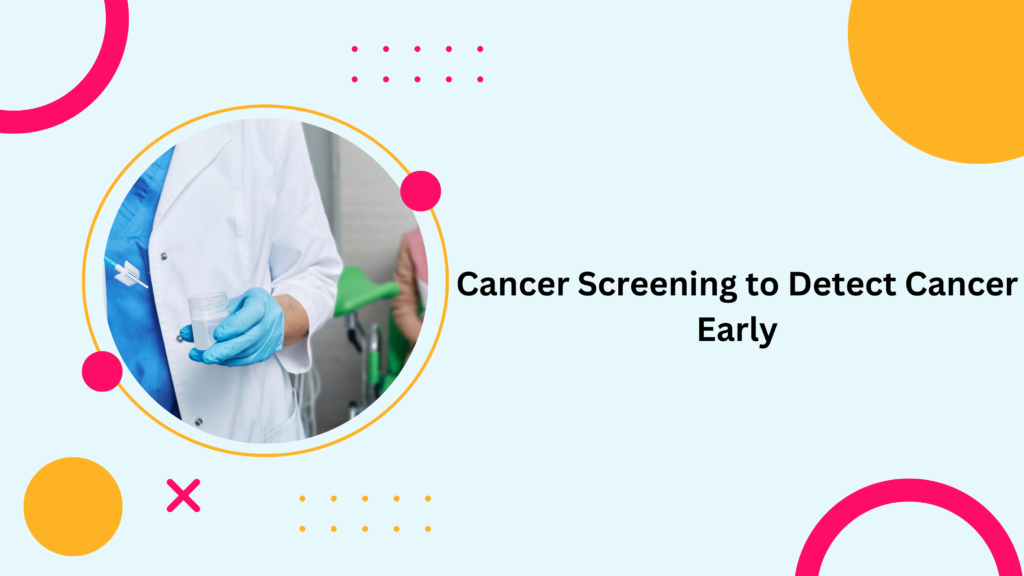
Cancer Screening to Detect Cancer Early
Table of Contents
- Introduction
- The Importance of Early Detection
- Common Cancer Screening Methods
- Mammography for Breast Cancer
- Pap Smears for Cervical Cancer
- Colonoscopy for Colorectal Cancer
- PSA Test for Prostate Cancer
- Who Should Get Screened?
- The Role of Risk Assessment
- The Advantages of Regular Screening
- Potential Drawbacks and Risks
- The Future of Cancer Screening
- Conclusion
- FAQs on Cancer Screening
Introduction
Cancer, a formidable adversary to our health, affects millions of lives worldwide. While the battle
against cancer continues on multiple fronts, one of the most effective strategies in this war is early
detection through cancer screening. In this article, we will explore the significance of cancer
screening, various screening methods, who should consider screening, and the future of this critical
aspect of cancer prevention and management.
The Importance of Early Detection
Cancer, in its early stages, is often asymptomatic, making it difficult to diagnose until it has
progressed significantly. This delay in diagnosis can lead to more advanced and challenging-to-treat
cancers. Early detection, on the other hand, can significantly improve treatment outcomes and
increase the chances of survival.
Common Cancer Screening Methods
Mammography for Breast Cancer
Mammography is the gold standard for breast cancer screening. It uses low-dose X-rays to detect
abnormalities in breast tissue, often before a lump can be felt. Regular mammograms are crucial for
women, especially those over the age of 40, as breast cancer is one of the most common cancers in
women.
Pap Smears for Cervical Cancer
Pap smears are essential for the early detection of cervical cancer. This screening method involves
collecting cells from the cervix to check for any abnormal changes. Regular Pap smears are
recommended for most women starting at the age of 21.
Colonoscopy for Colorectal Cancer
Colorectal cancer screening is typically done through colonoscopy, where a flexible tube with a
camera is inserted into the colon to look for polyps or cancerous growths. This screening is
recommended for adults starting at age 45.
PSA Test for Prostate Cancer
The PSA (Prostate-Specific Antigen) test is used to screen for prostate cancer in men. While its
effectiveness and necessity have been debated, it remains a part of prostate cancer screening
discussions, typically starting at age 50 for most men.
Who Should Get Screened?
Screening recommendations can vary based on age, gender, family history, and other risk factors. It’s
essential to consult with a healthcare provider to determine the most appropriate screening
schedule for you. Early detection strategies should be tailored to an individual’s unique
circumstances.
The Role of Risk Assessment
Risk assessment plays a vital role in determining the need for cancer screening. Individuals with a
family history of cancer or specific genetic mutations may require more frequent or specialized
screening. Risk assessment tools and genetic testing are becoming increasingly sophisticated in
identifying those at higher risk.
The Advantages of Regular Screening
Regular cancer screening offers several advantages. It can detect cancer in its earliest, most treatable
stages, reducing the need for aggressive treatments. Additionally, it can provide peace of mind for
individuals, knowing that they are actively monitoring their health.
Potential Drawbacks and Risks
While cancer screening is invaluable, it is not without potential drawbacks. False-positive results can
lead to unnecessary anxiety and follow-up tests, while false negatives may provide a false sense of
security. Overdiagnosis and overtreatment are concerns that need to be balanced with the benefits
of early detection.
The Future of Cancer Screening
The landscape of cancer screening is evolving rapidly. Advancements in technology and research are
paving the way for more precise and less invasive screening methods. Liquid biopsies, genetic
markers, and artificial intelligence-driven diagnostics are some of the promising developments on the
horizon.
Conclusion
In the battle against cancer, early detection is a potent weapon. Cancer screening can save lives by
identifying cancer in its early, most treatable stages. However, it’s crucial to approach screening with
an understanding of individual risk factors and in consultation with healthcare providers. As
technology continues to advance, the future of cancer screening holds the promise of even more
effective and accessible methods.
FAQs on Cancer Screening
- Is cancer screening only for individuals with a family history of cancer?
No, cancer screening is recommended for a wide range of individuals, as risk factors can vary.
Consult with your healthcare provider to determine your screening needs. - Are there alternative screening methods for those uncomfortable with invasive procedures?
Yes, some cancers have non-invasive screening options, such as blood tests and imaging. Discuss
your preferences with your healthcare provider. - Can cancer screening prevent cancer entirely?
While it can’t prevent cancer, early detection through screening can lead to more effective
treatment and better outcomes. - How often should I get screened for cancer?
Screening frequency varies by age, gender, and risk factors. Your healthcare provider can create a
personalized screening plan for you. - Are there any risks associated with cancer screening?
False-positive results, unnecessary follow-up tests, and overdiagnosis are potential risks, but the
benefits of early detection typically outweigh these concerns